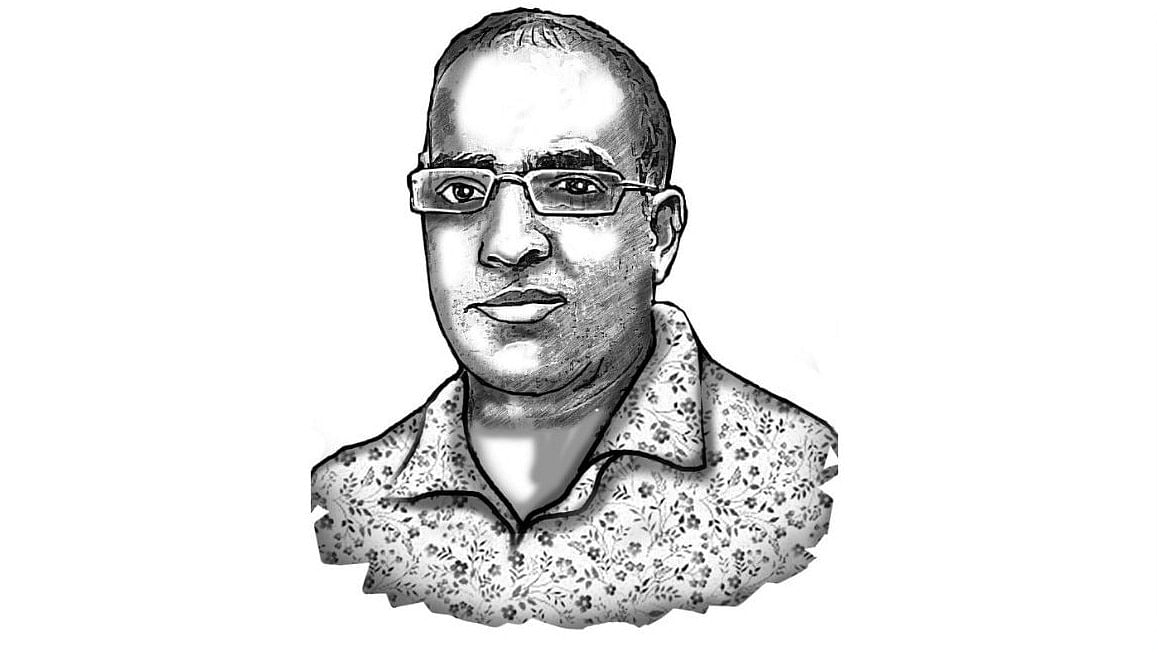
Ashwin Mahesh is a social technologist and entrepreneur, founder of Mapunity and co-founder, Lithium, wakes up with hope for the city and society, goes to bed with a sigh, repeats cycle
Credit: DH Illustration
In last week’s column, I described the cycle of higher un-education as follows: for a variety of reasons that have nothing to do with learning, most college students jostle to attend run-of-the-mill institutions, studying as little as necessary to get an over-priced, low-value certificate from a government-recognised college and university. The consequences are everywhere. Employers are sceptical about academic credentials; joblessness is high among those with degrees; the number of vacant seats is alarming; and millions of families have no hope of recouping their investment.
While the majority faces this reality, something else is happening to the best. For decades, we were promised by different leaders that Indian universities will be able to compete with foreign ones. That’s coming true, but not in the way they claimed. At many of the more reputed institutions in India, the cost of college education is now high enough that some families and students are looking at alternatives abroad and telling themselves that it would be better to spend their money there.
Moreover, higher education is now seen by many developed countries as the preferred path to admit immigrants. Despite some local opposition, the leaders of those nations are making it easier for foreigners educated at their own universities to stay on afterwards, making their workforces more productive and competitive. That stance may have something to do with the fact that the number of people giving up their Indian passports each year is now at a record high.
Whether rich, middle-income or poor, people don’t have the luxury of waiting for leaders in government to set things right. Moreover, education at any level is not something that can be improved swiftly; it will take years of persistent efforts. But the public’s needs are immediate, and therefore they must make choices accordingly. The experiences of friends and neighbours tells them that they should focus on what they can themselves do to get out of the trap they’re in.
If there is one thing to blame above all for this, it is the asymmetry of power in India’s higher education. Governments have dominated the landscape, either themselves offering courses or regulating the private ones. This dominance inevitably resulted in low accountability, despite poor outcomes. Curricula became outdated, and practical learning suffered as theory was emphasised. However, in the name of ensuring quality, the government restricted the number of institutions, which suited the private ones.
Collectively they became rent-seekers holding the market and society hostage. But that could not last. We should have learned that lesson from the rise of the best-paying market for large numbers of people -- the IT sector. The industry put a premium on programming skills that could be easily learned outside college, so much so that a large chunk of people getting their degrees in any field of engineering -- and even many of the sciences -- nonetheless shifted to IT for work.
This should have been a warning shot to the ears of the education establishment, but it was not. They were saved by one other legacy -- campus placement, which works well in the top 1% of institutions, modestly in another 5%, and not at all in the rest. Breathless reporting on the few who make it, however, has obscured what happens at most institutions.
The lethargy of the ‘system’ is particularly harmful today, because people are living longer. The start they get to their working years invariably determines how much they will earn and save during the next three or four decades, and that must provide a safety net for the last 20 years. Without productive jobs, the poor will face not only income inequalities, but also wide differences in lifespan between themselves and the rest of the population. Making one’s education count has never been more critical.
The rise of online learning has been another body blow. Coursera and its competition nudged people to think they could get their learning without the cost and time of college years. Many others followed, and eventually the colleges themselves began setting up such teaching platforms. Tens of thousands of people sign up to these each day to learn specific skills -- and even short-cuts -- from teachers around the world. Students who physically attend colleges might look down their nose at such fellow-learners, but employers are more practical. And that matters.
With more and more people voting with their feet and wallets, the wheels are coming off. For two decades at least, we pretended that all this is not happening and, instead, insisted that we’re on the cusp of a great transformation. Meanwhile, we have been overtaken by reality. As a result, for the overwhelming majority of students, college education has been a false promise. The emperor’s new finery has come at a great price, and left him unclothed.
(This is the second in a 3-part series on the past, present and much-needed future of higher education in India).